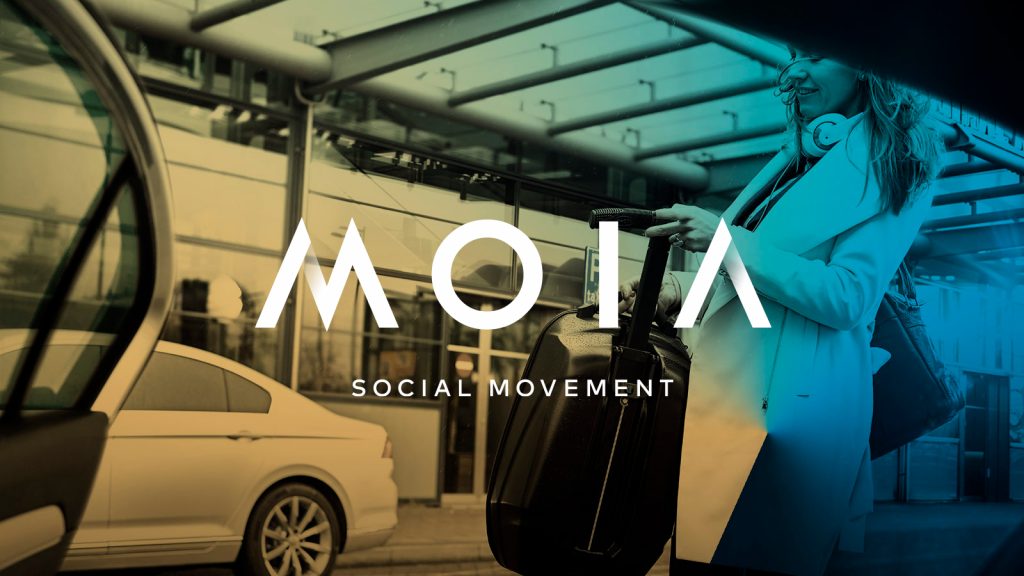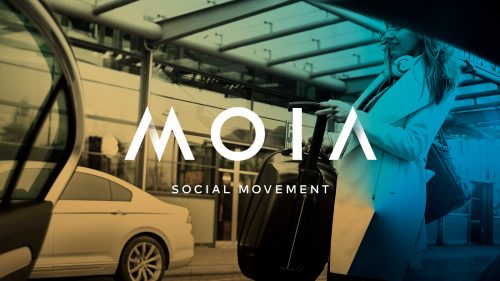As I am finalizing my schedule for meet-ups at CES in Las Vegas for early January 2018, I’m thinking about digital devices and wearable tech, connected cars, smart homes, and the Internet of Things through my all-health, all-the-time lens.
My friends at TrendWatching write today about the automaker, Volkswagen, which has a division called MOIA started in 2016. VW, like most car manufacturers, is working on strategies to avoid being disrupted and made irrelevant as tectonic forces like autonomous cars and shared rides innovate and re-define the nature of personal transportation.
 MOIA is a brand and a self-described “social movement.” The organization’s objective is, “to develop and offer an extensive portfolio of on-demand mobility services that make the lives of people living in urban areas better, cleaner and safer.”
MOIA is a brand and a self-described “social movement.” The organization’s objective is, “to develop and offer an extensive portfolio of on-demand mobility services that make the lives of people living in urban areas better, cleaner and safer.”
Ole Harris, the brand’s CEO, said that ultimately, MOIA’s goal will be to, “take one million vehicles off the road by 2025.”
Here’s an automaker stating the intention to remove autos from the road.
As TrendWatching puts it: “What would it look like if we launched a start-up whose aim was to reduce sales by one million units?”
Health Populi’s Hot Points: For the legacy healthcare system, some analogous questions would be:
- What is a pharmaceutical company without pills?
- What is a hospital without beds?
- What is a doctor without bricks-and-mortar exam rooms?
- What is a health plan beyond a health insurance marketer?
- What is an electronic health record where data are owned and controlled by patients?
Today, carmakers are challenged by Tesla, Lyft, Uber, Zipcar and shared bicycle services, along with emerging autonomous car developments, some of which are sponsored by the auto companies themselves.
Healthcare providers, plans, and suppliers are challenged by their own equivalents of Teslas and Ubers. Some of the disruptors are obvious — Amazon, of course, along with Health 2.0 companies delivering transparency, new business models for healthcare delivery, medical banking programs, and IoT devices that melt and blur into peoples’ daily lives through enchanting design and useful services.
But there are more subtle forces at work to disarm and disrupt healthcare as we know it: among them, the demographic force that are Millennial consumers and younger, and at the older age spectrum, Boomers. Younger and older patients alike will challenge healthcare providers and suppliers to provide and supply services and products that serve and (co)produce health.
Note that MOIA seeks to, “make make the lives of people….better, cleaner and safer.”
Sounds a lot like health, doesn’t it? That’s no surprise to me: in the Edelman Health Engagement Barometer, we learned that consumers in fact look to auto companies as partners in health.
I’ll be thinking about the implications and lessons of MOIA in and beyond 2018 through my health/care lens with my clients and colleagues. I advise that you do, too.
Please stay connected to the Health Populi blog and my Huffington Post columns during CES week, 7-12 January 2018, for more on new-new digital health things.





 Interviewed live on BNN Bloomberg (Canada) on the market for GLP-1 drugs for weight loss and their impact on both the health care system and consumer goods and services -- notably, food, nutrition, retail health, gyms, and other sectors.
Interviewed live on BNN Bloomberg (Canada) on the market for GLP-1 drugs for weight loss and their impact on both the health care system and consumer goods and services -- notably, food, nutrition, retail health, gyms, and other sectors. Thank you, Feedspot, for
Thank you, Feedspot, for  As you may know, I have been splitting work- and living-time between the U.S. and the E.U., most recently living in and working from Brussels. In the month of September 2024, I'll be splitting time between London and other parts of the U.K., and Italy where I'll be working with clients on consumer health, self-care and home care focused on food-as-medicine, digital health, business and scenario planning for the future...
As you may know, I have been splitting work- and living-time between the U.S. and the E.U., most recently living in and working from Brussels. In the month of September 2024, I'll be splitting time between London and other parts of the U.K., and Italy where I'll be working with clients on consumer health, self-care and home care focused on food-as-medicine, digital health, business and scenario planning for the future...